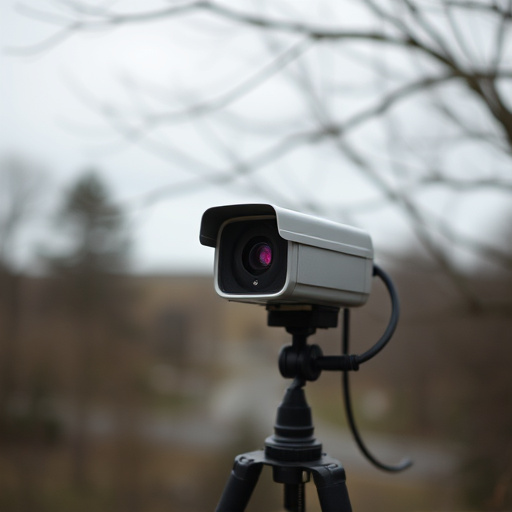Discreet installation is key for successful remote viewing nanny surveillance using wireless technology and pinhole cameras, offering minimal disruption and maximum flexibility. Place them strategically – behind furniture, in corners or cabinets (for homes) or near doors/windows or ceiling tiles (for businesses) – to maintain clear visibility while keeping the system out of sight. Align camera positioning with monitoring needs: high-traffic areas indoors and clear lines of sight outdoors for optimal results, avoiding sensitive spaces like bedrooms or bathrooms both indoors and outdoors while respecting privacy.
Discover the art of installing a pinhole camera with our comprehensive guide. Explore strategic locations for discreet remote viewing and nanny surveillance, ensuring optimal signal strength while adhering to privacy laws. From choosing indoor vs outdoor spaces to technical setup, maintenance, and troubleshooting, this article equips you to deploy and maintain a reliable system. Enhance your security measures with these expert tips on the installation of a remote viewing nanny surveillance system.
- Choosing Discreet Install Locations
- – Suitable areas for remote viewing and nanny surveillance
- – Avoiding detection: Understanding the environment
- – Considerations for indoor vs outdoor spaces
Choosing Discreet Install Locations
When installing a pinhole camera for remote viewing or nanny surveillance, discretion is key. Opting for hidden locations ensures the system serves its purpose without drawing unwanted attention. Consider areas that are naturally out of sight, such as behind furniture, in corners, or inside cabinets. These spots can provide clear line-of-sight to the target area while remaining largely unseen.
Additionally, using a Remote Viewing Nanny Surveillance System allows for greater flexibility and control over installation. This setup often incorporates wireless technology, enabling easy placement of cameras without the need for extensive wiring. Such systems can be particularly useful in homes or offices where maintaining a low-profile is essential, ensuring peace of mind while preserving privacy.
– Suitable areas for remote viewing and nanny surveillance
Pinhole cameras, with their discreet and remote capabilities, are ideal for areas requiring constant surveillance yet minimal visibility. In the context of remote viewing nanny surveillance systems, these tiny yet powerful tools offer a level of comfort and control that was once unimaginable. Whether installing them in a nursery to check on sleeping infants or monitoring activities in a home office, pinhole cameras provide a covert way to keep an eye on things without intruding on personal space.
For optimal remote viewing nanny surveillance, consider locations where privacy is paramount but supervision is necessary. These could include play areas for young children, kitchens during meal preparation, or even outdoor spaces where kids interact with nature. The beauty of pinhole cameras lies in their ability to transmit live feeds remotely, allowing parents or caregivers to stay connected and informed without physically being present.
– Avoiding detection: Understanding the environment
When installing a pinhole camera for remote viewing or nanny surveillance, understanding your environment is key to maintaining secrecy and avoiding detection. Pinhole cameras are designed to be discreet, but their success relies on strategic placement. Consider the layout of the area you want to monitor—is it a private residence with limited public access, or a business with open spaces and frequent foot traffic? In residential settings, placing the camera in a corner, behind a piece of furniture, or inside a decorative object can help blend it into the environment. For businesses, utilizing corners near doors, windows, or in ceiling tiles can provide covert surveillance without raising suspicion.
The goal is to find a spot where the camera has a clear view but remains out of plain sight. In today’s digital era, with advancements in technology, even subtle changes in lighting or unusual movements can attract attention. Therefore, it’s crucial to choose a location that offers both visibility and anonymity, ensuring your remote viewing system operates effectively while maintaining privacy and security.
– Considerations for indoor vs outdoor spaces
When considering where to install a pinhole camera, whether for indoor or outdoor use, it’s crucial to think about the environment and intended purpose. Indoor spaces offer more control over lighting and temperature but may require careful placement to avoid obstructing views or causing disruptions. In contrast, outdoor locations provide natural light and broader perspectives but demand robust construction to withstand varying weather conditions. For example, a Remote Viewing Nanny Surveillance System designed for indoor use should focus on discrete mounting in areas like playrooms or kitchens, while an outdoor system would be better suited near entryways or windows with clear lines of sight.
For indoor applications, think about high-traffic areas where monitoring is needed without drawing too much attention. Outdoor installations benefit from open spaces that allow for clear and unobstructed footage. Additionally, consider privacy implications; indoors, ensure cameras aren’t placed in areas where privacy expectations are higher, such as bedrooms or bathrooms. Outdoors, protect the system from potential vandalism while respecting neighbors’ privacy by avoiding locations that could capture their homes or vehicles without consent.
When selecting locations for your pinhole camera installation, prioritizing discreet and suitable areas is key. For remote viewing and nanny surveillance systems, finding the perfect spot allows for unobtrusive monitoring while ensuring optimal image quality. Consider both indoor and outdoor spaces, understanding the environmental factors that could impact performance. By carefully choosing locations with these tips in mind, you can create an effective and undetectable security system tailored to your needs.
